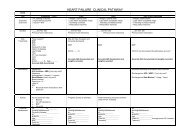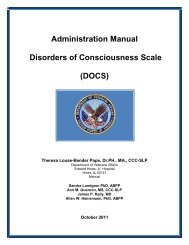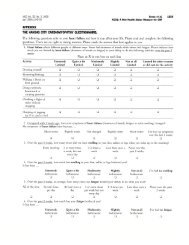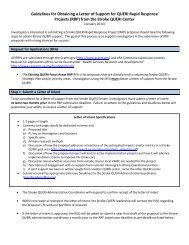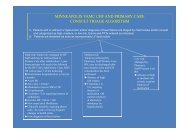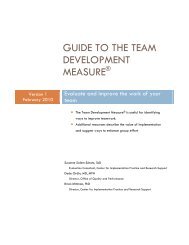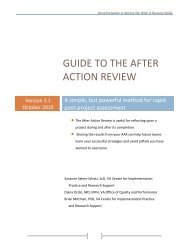The Veteran Supported Education Service Treatment Manual: VetSEd
The Veteran Supported Education Service Treatment Manual: VetSEd
The Veteran Supported Education Service Treatment Manual: VetSEd
Create successful ePaper yourself
Turn your PDF publications into a flip-book with our unique Google optimized e-Paper software.
<strong>Veteran</strong> has liked and disliked about past schooling experiences, and ask the <strong>Veteran</strong><br />
what he or she would like the next school environment to look like. Be sure to let the<br />
<strong>Veteran</strong> know that their list of personal criteria is a ―living document.‖ That is, the list<br />
can and will likely change somewhat as you work with the <strong>Veteran</strong> to gather more<br />
information about particular schools.<br />
You can also use the Free College Matching Wizard: www.studentaid.ed.gove/myfsa to<br />
help the <strong>Veteran</strong> find the right school for his/her career intentions. Employed <strong>Veteran</strong>s<br />
should ask their employers to recommend schools that provide training in the skills the<br />
<strong>Veteran</strong> will need for his/her career, and ask if the employer will provide assistance to<br />
pay for school.<br />
ii.<br />
Linking to Information and Resources<br />
In the age of internet search engines, information about college and training programs is<br />
more readily available than ever before. As an example, we typed ―Massachusetts<br />
Colleges‖ into an internet search engine Web site and received over 27 million ―hits‖ in<br />
response. Anyone, <strong>Veteran</strong> or non-<strong>Veteran</strong>, would find it overwhelming to look through<br />
all those Web pages! As a peer <strong>VetSEd</strong> provider, your role is to link <strong>Veteran</strong>s to accurate<br />
information and resources about schools and training programs that will help them<br />
choose where they might like to go to school.<br />
Below, we provide basic information about different types of schools and training<br />
programs. This information is also summarized in Appendix B. Once the <strong>Veteran</strong> has<br />
reviewed the various types of schools and training programs, it should be clearer which<br />
setting fits best with the personal criteria they have identified in the process above. As the<br />
<strong>Veteran</strong> is collecting more information, you can work with them to update their personal<br />
criteria list from Worksheet #4: My Personal Criteria for Schools/Training Programs<br />
Checklist. This is a critical step because the <strong>Veteran</strong>‘s list of personal criteria can be used<br />
to fill in the top of Worksheet #6: School Choice Checklist: Possible Questions for<br />
Campus Visit. Both you and the <strong>Veteran</strong> can then refer back to Appendix B to help<br />
determine which school he/she wants to attend.<br />
When considering one‘s own personal criteria for a school setting it is important to first<br />
be familiar with the different types of schools and training settings. We briefly describe<br />
below: Community and Junior colleges, Proprietary Schools, Four year Colleges and<br />
Universities, and On-line Schools or Distance Learning Institutions.<br />
Types of School or Training Settings<br />
Community and Junior Colleges. Community and junior colleges offer Associates and<br />
certificate degrees that tend to be job-focused. While earning an Associates degrees tend<br />
38 | P a g e



